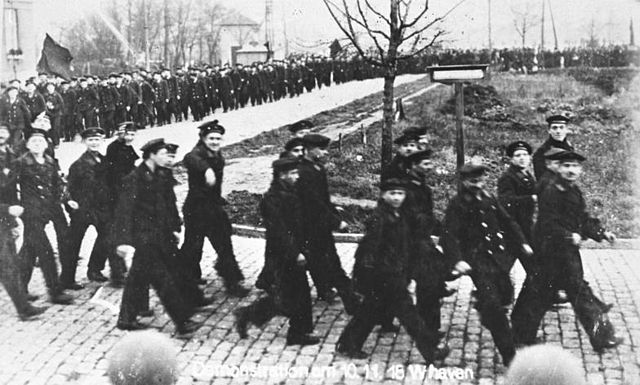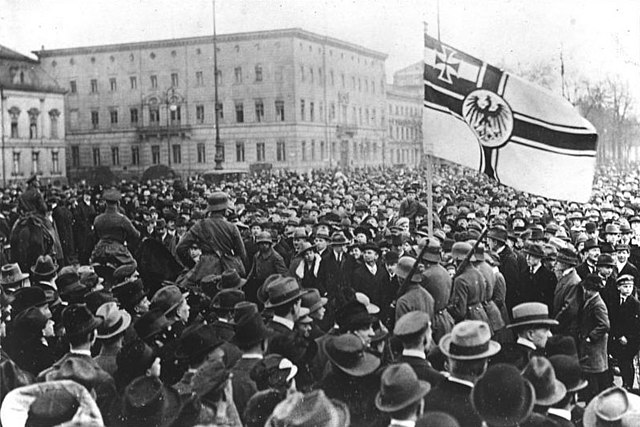In German history, a Reichsexekution was an imperial or federal intervention against a member state, using military force if necessary. The instrument of the Reichsexekution was constitutionally available to the central governments of the Holy Roman Empire (800–1806), the German Empire of 1848–49, the German Empire of 1871–1918, the Weimar Republic (1918–33) and Nazi Germany (1933–45). Under the German Confederation (1815–66) and the North German Confederation (1867–71), the same right belonged to the confederal government and is called Bundesexekution.
Ferdinand III's Reichsexekution against Saxony and Bavaria in 1620
Soldiers on the streets during the Reichsexekution against communists in Saxony in 1923
The Weimar Republic, officially known as the German Reich, was a historical period of Germany from 9 November 1918 to 23 March 1933, during which it was a constitutional federal republic for the first time in history; hence it is also referred to, and unofficially proclaimed itself, as the German Republic. The period's informal name is derived from the city of Weimar, which hosted the constituent assembly that established its government. In English, the republic was usually simply called "Germany", with "Weimar Republic" not commonly used until the 1930s.
Sailors during the mutiny in Kiel, November 1918
Philipp Scheidemann addresses a crowd from a window of the Reich Chancellery, 9 November 1918.
Official postcard of the National Assembly
Crowds in Berlin watching the Marinebrigade Ehrhardt march in under the imperial war ensign during the Kapp Putsch






